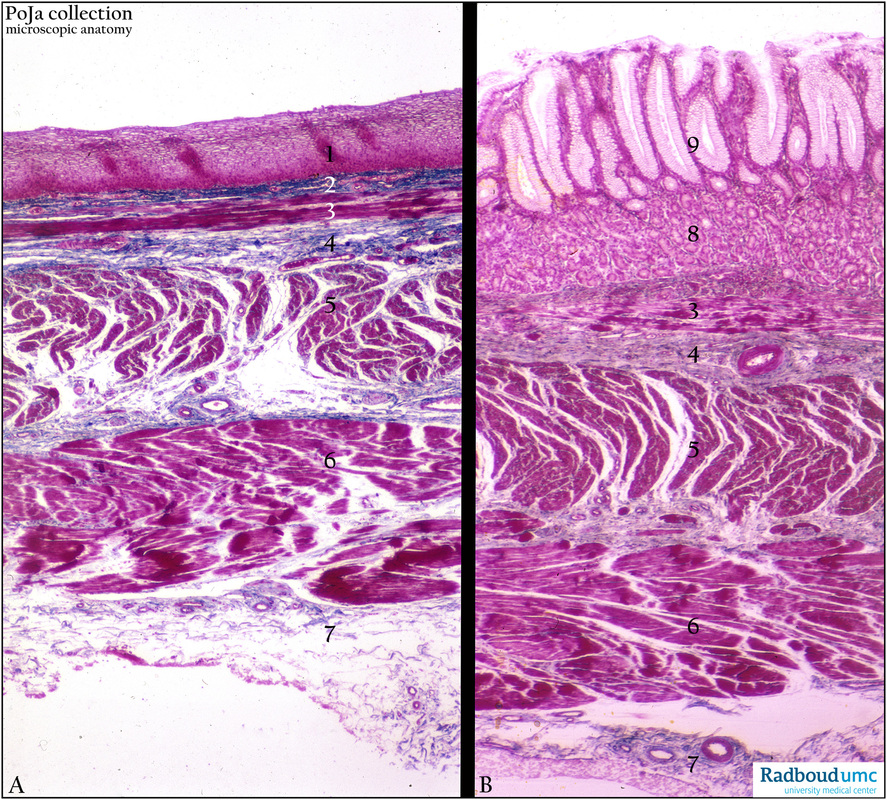4.1.1 POJA-L3952
Title: Cardia zone of the stomach versus the esophagus (human)
Description: Stain: Azan. (A) Esophagus. (B) Cardia part of the stomach.
The esophagus is covered with a non-keratinizing multilayered squamous epithelium (1) that forms indentations or papillae with the underlying lamina propria (2) offering resistance to the passage of food. (3) Lamina muscularis mucosae surrounded with (dense) connective tissue of the so called tela submucosa (4). The passage of food is propagated by the peristaltic movement caused by both the inner circular muscle layer (5) and the outer longitudinal muscle layer (6), both spirally convoluted. The tunica adventitia (7) (loose connective tissue) takes care for the embedding of the esophagus. Nerve complexes and ganglion cells can be found in between and in the vicinity of the muscular layers. In the cardia area of the stomach the squamous epithelium abruptly changes into wide crypts or foveolae lined by single layered mucous epithelium (9). The esophageal mucous glands (8) are winded or convoluted and end in the bottom of the foveolae.
Keywords/mesh: esophagus, cardia area, stomach, cardia glands, histology, POJA collection
Title: Cardia zone of the stomach versus the esophagus (human)
Description: Stain: Azan. (A) Esophagus. (B) Cardia part of the stomach.
The esophagus is covered with a non-keratinizing multilayered squamous epithelium (1) that forms indentations or papillae with the underlying lamina propria (2) offering resistance to the passage of food. (3) Lamina muscularis mucosae surrounded with (dense) connective tissue of the so called tela submucosa (4). The passage of food is propagated by the peristaltic movement caused by both the inner circular muscle layer (5) and the outer longitudinal muscle layer (6), both spirally convoluted. The tunica adventitia (7) (loose connective tissue) takes care for the embedding of the esophagus. Nerve complexes and ganglion cells can be found in between and in the vicinity of the muscular layers. In the cardia area of the stomach the squamous epithelium abruptly changes into wide crypts or foveolae lined by single layered mucous epithelium (9). The esophageal mucous glands (8) are winded or convoluted and end in the bottom of the foveolae.
Keywords/mesh: esophagus, cardia area, stomach, cardia glands, histology, POJA collection

